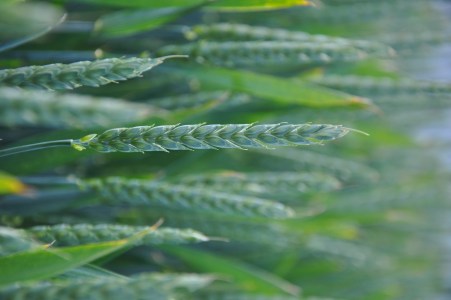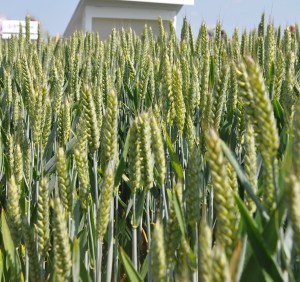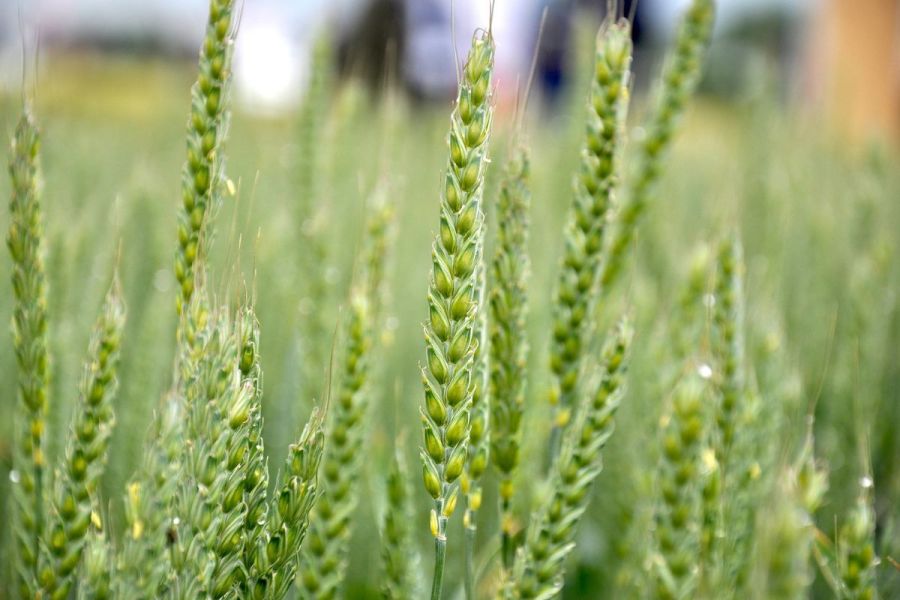The days of selecting a wheat variety for its straight yield are over, and instead, the focus has moved to those that will provide consistent performance on farm, time and time again. CPM explores how variety choice can help mitigate risk.
“When there are tried and tested elements to a variety, this bankability of performance is really valuable.”
By Melanie Jenkins
In uncertain times, having consistency can ease pressure and assure growers that whatever is thrown at them, they’ll almost certainly have a marketable wheat crop at the end.
“Farm businesses seem to be changing very quickly in recent years, be it progression to bigger units or diversifying,” says Agrii’s John Miles. “It feels like farmers are having too much to do most of the time.
“And on top of this, the uncertainty surrounding fertiliser prices, changing weather patterns and disease and weed pressures are all having to be dealt with. For this reason, reliability is a key tool to help a business continue to operate profitably, and variety selection plays a part in this,” he explains.
Wheat is the main earner in terms of its overall contribution to income on most arable farms, which is why selecting the right variety is so important, says Charles Wright of Farmacy. “There’s no ‘perfect’ variety out there, but it’s good to know how consistent a variety is, both in terms of good and bad traits. Obviously, we all want to know what a variety’s strengths are, but knowing its weaknesses allows you to plan your management accordingly.”
And certain varieties have demonstrated consistent performance time and again, says John. “When there are tried and tested elements to a variety, this bankability of performance is really valuable. And because of this value, we’ve seen a number of varieties persist in the market over time.

SY Insitor is a variety which is well suited to those who might be wary of not achieving their desired specific weight, says Matthew Bull.
“Graham is one of those varieties,” he says. “It comes out on the top of Agrii’s sustainability matrix and has consistently been a stalwart variety that has accounted for 12-14% of our wheat seed sales for the past four years.”
Uncertain weather patterns have become a more prominent feature, from extremes of very wet to very dry autumns and drought conditions, as were experienced in May and June of this year or during last year’s harvest, explains Matthew Bull of Syngenta. “We’ve seen certain varieties are more stable than others across a variable season, notably Gleam and Graham from Syngenta’s hard Group 4 line-up.”
One way of managing unpredictable weather during the drilling period is to select a variety that can be drilled at a range of different timings, he says. “Having a variety that can be planted early and remain resilient during variable conditions, but which can also be safely sown late, like Gleam, can be particularly useful if the weather does turn. One way or another, you’ll be able to get the variety in the ground and still have a good crop.”
Gleam is an adaptable variety, agrees Matthew. “We see it as the most adaptable variety on the AHDB Recommended List. It performs in a range of different scenarios, from first to second wheat situations, in early, mid, or late drilled slots and on light or heavy land. In all cases, it’s producing yields at 103% of control and has early maturity to help spread harvest risk. So if you have variable land on farm or a range of rotational positions, having a variety you know will deliver is important.”

Graham comes out at the top of Agrii’s sustainability matrix and has accounted for 12-14% of its wheat seed sales for the past four years.
Gleam has also been tested in a number of different cultivation scenarios, he says. “Although it looks more attractive to the eye in a plough-based system, with a higher plant count per m² compared with a direct drilled situation, the variety’s ability to adapt means it produces a higher thousand grain weight and more grains per ear to compensate. We actually found no statistical difference in Gleam’s performance in a ploughed, min-tilled or a direct drilled situation. Meaning even growers drilling into marginal positions can rely on it to perform.”
Charles also feels that Gleam can perform in any situation. “When you see it in the field, it never looks unbelievable. But wherever it’s put, the variety always seems to do well – it’s a great all-rounder.”
This year’s spring presented growers with septoria problems from the off, says Matthew. “There was a lot of rain splash events throughout March and temperatures were relatively warm, meaning there was high pressure at fungicide timings. These instances are where varieties with high septoria resistance are invaluable and where diverse genetics can be really useful.
“Graham is very unique in this respect – having come from Syngenta’s French breeding programme – and it’s why we think that its septoria resistance has held up so well. The variety has been very stable against septoria over the years and is still rated at 6.7 on the RL against the disease.”
John agrees that it’s Graham’s unique parentage that has likely contributed to its septoria resistance remaining high. “The variety’s performance hasn’t deteriorated and therefore it still has market appeal.”

Everyone wants to know what a variety’s strengths are, but knowing its weaknesses allows appropriate management planning, says Charles Wright.
And SY Insitor, scoring 6.4 against septoria on the RL, has demonstrated particularly good performance further west over the past few seasons, he notes. “This is where we’ve really seen the variety’s strengths come to the fore and we’re seeing it cope better in this area against septoria than its score would indicate, meaning it’s really stood out.”
One drawback with Gleam, Graham and Insitor is that all three are susceptible to seedling stage yellow rust, highlights Matthew. “So it’s important to keep on top of this through the season with early-stage fungicides. However, Graham has very good adult plant resistance, scoring 8 on the RL, which allows for flexibility with spray timings and dose rates.”
Due to its disease resistance profile, Graham also demonstrates high untreated yields, says Matthew. “At 93% of the treated control, it’s achieving 8% more than the average variety on the RL, which also helps to reduce risk where spray timings are compromised.”
This year has also brought instances of Orange Wheat Blossom Midge (OWBM) to wheat crops, something which genetic resistance can help manage, says Matthew. “Gleam and Insitor have OWBM resistance which assists in simplifying pest management and can reduce insecticide use and spend in these situations.”
Charles feels that there’s a huge risk to farms from the loss of, or dwindling efficacy of insecticides. “OWBM resistance, along with barley yellow dwarf virus tolerance in varieties is hugely important and I think these will be market drivers in time. A lot of businesses don’t want to use insecticides and so have to manage these risks through variety choice.”

Farm businesses seem to be changing very quickly in recent years, be it progression to bigger units or diversifying, says John Miles.
Variety selection can also play a role in weed management. Blackgrass is particularly relevant this year, says Matthew. “One of the key factors in an integrated management system for blackgrass is delayed drilling of winter wheat, meaning a lot of growers have looked at varieties with good performance in this slot, which have vigorous autumn growth and good root development.
“Insitor fits particularly well in this situation, working in the late drilled slot and with the growth habit and rooting to enable it to perform,” he explains. “Syngenta has independent data which shows the variety is a particularly strong rooter and that it’s vigorous from the off. So if you’re in a blackgrass situation and are looking to drill from mid-October onwards, it could be a good fit.”
One way to do this is to select a variety that is better able to cope with a lack of soil moisture through better nutrient utilisation and water use efficiency, he says. “Some varieties are known for performing on lower water retentive sites and grain quality can link into that. You don’t want to select a variety with a lower specific weight in situations where soils are prone to drought.”

Syngenta sees Gleam as the most adaptable variety on the AHDB Recommended List because of how it performs in a range of different scenarios.
Another way to mitigate uncertainty is to select a variety with a high specific weight from the off, says Matthew. “Last year was a good year for grain quality in this sense, where we saw most wheat crops hitting specification for feed and higher levels. But this isn’t always the case, so having a variety with inherently good grain quality to start with mitigates the risks of it falling below the required specification should conditions be less favourable.”
Insitor is a variety which is well suited to those who might be wary of not achieving their desired specific weight, according to Matthew. “It has a higher specific weight than Gleam or Graham at 78.9kg/hl and is among the top hard Group 4s on the RL.
“The variety also performs well on light land, which we believe is driven by its rooting capacity,” he adds. “We often see specific weight drop off on light land because crops can burn up quickly, so planting a variety with decent specific weights helps to manage those situations.”
Agrii has also noted Insitor’s performance on light land, says John. “It’s performance on light land has become increasingly impressive. We’d always pigeon-holed the variety into a late drilling scenario behind root crops, but when planted in the main drilling window on light soils it’s demonstrated very good performance despite the dry springs we’ve had over the past few years – and we’re still not sure how it does this, maybe because of its higher specific weight.”
Although it’s not always clear how a variety performs well in uncertain situations, it’s the test of time that demonstrates their worth, he says. “Every farm situation is unique for a multitude of reasons, but the best varieties are the ones that remain on farm long enough to be tested in lots of different scenarios.”
This article was taken from the latest issue of CPM. Read the article in full here.
For more articles like this, subscribe here.
Sign up for Crop Production Magazine’s FREE e-newsletter here.




